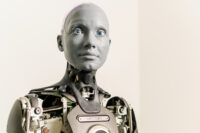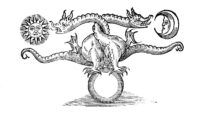I’ve spent considerable time with my granddaughter watching Sponge Bob Square Pants, the kids’ cartoon show featuring an ensemble of recurring characters living in the undersea fantasy town of Bikini Bottom. It’s wacky, weird and colorful, but also presents a coherent vision of moral character and values upon which a good society is built. As such, it’s better adult fare than most “adult” TV.
Television cartoons have long explored the anarchy of unconventional characters. I grew up on Looney Tunes and the irreverence of Bugs Bunny and Daffy Duck. Both were wisecracking, mischief-making clowns of irresistible charm; their downright dangerous, right-to-the-edge-of-death behavior played against their honest authenticity, which always pulled them through. The plots, however, were pure slapstick; Elmer Fudd was one-dimensional in his pathological obsession with that “cwazy wabbit” and guns.
Sponge Bob and his cohorts, in contrast, exhibit character complexity in their struggle to adapt to the demands of society and its rules. Sponge Bob, in particular, embodies his namesake; he absorbs the emotions and behavior of larger society, providing a means for reflecting upon the molding of individuals within a social container. His childlike personality is endlessly creative and playful, but his emotions continually take over and thrust him into episodes of paranoia, manic-depression, elation, despair, oceans of tears and gales of laughter. While on the one-hand he and the other characters live conventional cartoon lives of phantasmagorical weirdness — being chopped, sliced, exploded and so forth — they also have homes, pets, jobs, friends, enemies and hobbies. Their small-town life includes being in everybody else’s business, of course.
The ensemble cast represent varying aspects of social character: Mr. Krabs, obsessed with making and accumulating money, owns the Krabby Shack fast-food joint where Sponge Bob is the fry-cook, and is an archetypal capitalist shamelessly exploiting his workers for profit. Whatever emotion he displays towards his fellow creatures is a shallow reflection of his obsessive love of money.
Patrick, Sponge Bob’s best friend, is all heart and no brain. Accordingly, he plays the archetypal “fool” who in his Shakespearean manner reveals profound truth to others, if never to himself. Mrs. Puff, teacher at the Boating School at which Sponge Bob repeatedly fails to qualify for his driving license, is the long-suffering bureaucrat, sweet and hardworking but undermined by the imposition of rigid social structures of behavior. Squidward, Sponge Bob’s neighbor and co-worker at the Krabby Shack, is a talentless narcissistic misanthrope with misplaced aspirations to grandeur. He is the everyman of modern times, intelligent, cultured, opinionated and hopelessly neurotic. In short, the cast of characters looks a lot like what we know.
While watching with six-year-old Isabelle, we talk about the meaning of what’s going on; that love of money falls far below the value of friendship, friendship includes the dynamic give-and-take of generosity and self-absorption, everybody no matter how strange on the outside has the capacity for being good on the inside, and kindness overcomes adversity. Despite the eye-candy of bulging eyes, exploding bodies and the generally chaotic fabric of everyday life in Bikini Bottom, Sponge Bob presents a parable about what living with others requires, the values that matter, and the basis of creating a good society. And… it’s funny!





Be First to Comment